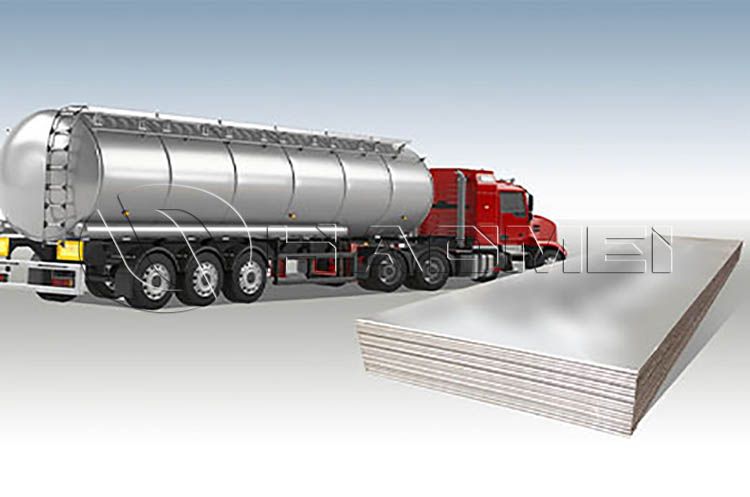Get in touch
-
Email:
sale@alumhm.com -
Tel/whatsapp:
+86-15978414719 -
Fax:
+86-0371-65621393 -
Address:
No.14 Waihuan Road, CBD, Zhengzhou, China -
Website:
https://www.aluminium-tanker-plate.com
Is It Economic to Use 5454 or 5059 to Make Tank Truck
In the field of tank manufacturing, the choice of materials plays a decisive role in cost control and product performance. 5454 and 5059 aluminum alloys have become ideal choices for tank manufacturing due to their unique advantages.

5454 aluminum sheet
5454 aluminum alloy is widely used in tank manufacturing, especially in the field of fuel tank trucks. It is a typical rust-proof aluminum, which makes it easy to deal with various corrosive environments. In the process of transporting oil products by tank trucks, humid air, residual moisture, etc. may cause corrosion to the tank body, and a dense aluminum oxide protective film can be formed on the surface of 5454 h32 aluminum sheet, which effectively prevents the erosion of the atmosphere and moisture, prevents the tank truck from rusting and contaminating the oil products, and greatly prolongs the service life of the tank body.
In terms of strength, 5454 aluminum alloy has a higher strength, which is about 20% higher than the common 5052 aluminum plate. Good strength ensures that the tank body can still maintain structural integrity when subjected to certain pressure and external force impact, reducing the maintenance cost and safety hazards caused by tank damage.
At the same time, the 5 series aluminum plate has a good elongation rate, which can better adapt to various processing technologies during the manufacturing process, facilitate the molding of the tank body, and reduce the processing difficulty and scrap rate.
5059 aluminum alloy
5059 aluminum alloy belongs to the 5 series AL-Mg alloy. It is a material with excellent comprehensive performance and is highly favored in the field of high-end tank manufacturing, such as LNG storage tanks and large ship tanks. Its low density of only 2.66 g/cm³ has great advantages in application scenarios with strict weight requirements, and can reduce the overall weight while ensuring the strength of the tank.
Its tensile strength is excellent, even higher than some low-carbon mild steels, providing strong structural support for the tank. In transportation tools such as ships and tank trucks, the tank needs to withstand complex external forces. The high strength of 5059 aluminum alloy ensures that the tank can operate stably during long-term use, reducing the risk of deformation or damage caused by insufficient strength.
In terms of corrosion resistance, 5059 alloy has strong resistance to seawater and marine climate corrosion, and is very suitable for tank manufacturing related to marine engineering, such as tanks for ships and yachts. In harsh marine environments, it can be durable and reduce maintenance frequency and costs.
At the same time, 5059 aluminum alloy has good welding performance and is not easy to crack and deform after processing. This allows different parts to be accurately connected through welding processes during the tank manufacturing process to ensure the sealing and overall performance of the tank.
Cost-benefit analysis
From the perspective of procurement cost, 5454 and 5059 aluminum alloys may be slightly higher than ordinary carbon steel materials, but considering the entire life cycle cost, they have significant advantages. Taking tank trucks as an example, although the initial purchase cost of aluminum alloy tank trucks may increase by 60,000 to 70,000 RMB, due to its lightweight fuel savings, reduced tire wear and higher transportation efficiency, it can quickly make up for the initial price difference and achieve cost reduction in long-term operation. Moreover, its service life of 15 to 20 years reduces the cost of frequent tank replacement compared to carbon steel tank trucks.
In terms of maintenance costs, 5454 and 5059 aluminum alloys, with their good corrosion resistance and high strength, do not require frequent anti-rust treatment and structural inspection and maintenance like carbon steel. For example, carbon steel tank trucks may need to be painted and maintained every year, while aluminum alloy tank trucks do not need to be so frequent, which greatly reduces the manpower and material costs of maintenance.
In addition, the recycling value of aluminum alloy materials is high. When the tank body reaches the end of its service life, 5454 and 5059 aluminum alloys can be recycled and reused, and the value obtained from the recycling can offset part of the initial cost investment to a certain extent, which finds a good balance between environmental protection and economic benefits.
